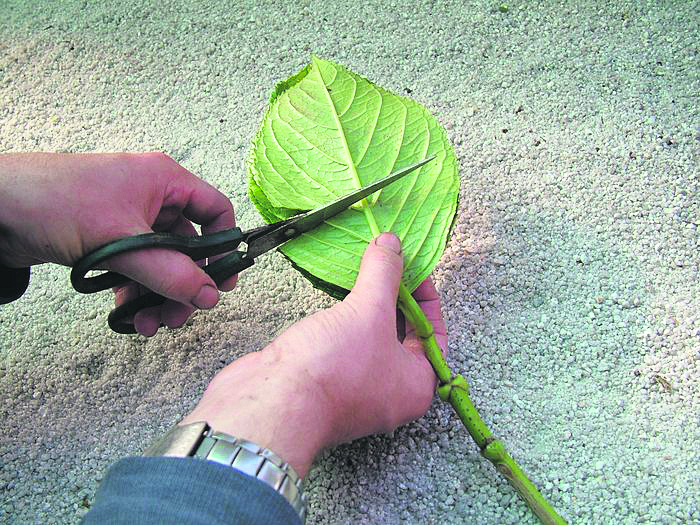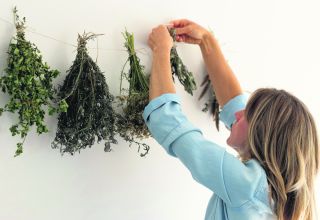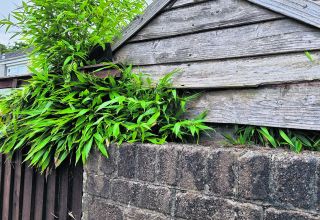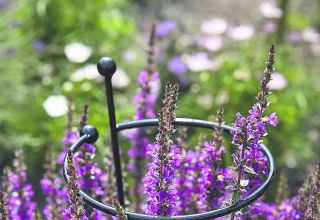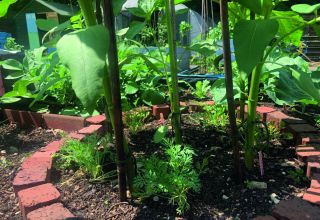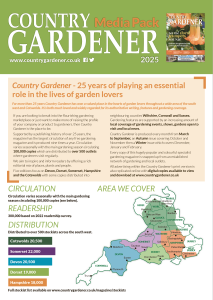The longest day of the year is amazingly only a few weeks away and the garden is growing at a rapid pace.
The frenzy of spring should be slowing into a more regular rhythm. The hundreds of young plants you have been raising should have left the confines of the greenhouse and are now making their own way in the world. Consequently, all you must do in terms of your gardening jobs is keep up with the watering, weeding, grass cutting, hedge trimming, etc, etc.
1. Take hydrangea cuttings
Now is the ideal time to take cuttings from any hydrangea shrub. Take a cutting from a branch of the hydrangea shrub about five inches long. The belief is the cutting will work best if taken from a branch that did not flower this year. Remove the lower leaves of the bottom two leaf nodes. The leaf node is where a leaf comes out of the branch.
Remove the lower leaves from the stem and if the top leaves are large, cut them in half to help reduce water loss and wilting.
2. Pinch out tomato side shoots
Cordon tomatoes are best grown as single-stemmed plants. However, these vigorous plants naturally produce side-shoots from the joints where leaves sprout from the main stem. These side-shoots should be pinched out to keep plants growing vertically on just one stem.
Large side shoots can be used as cuttings to start other plants. You can stand them in a glass of water for a week or two or use rooting gel.
Sometimes tomato growers allow a large side shoot to grow into a second main stem. This has the advantage of growing more trusses at a lower height from one plant.
Bush varieties, also known as determinate, do not need to have their side shoots removed. However, there are situations when it may be wise to remove some of them if growing large tomatoes and you would like the fruit to mature earlier rather than later.
Of course, by removing side shoots on bush varieties, you will reduce the number of flowers and fruit that would grow over a long season.

3. Strategic watering is called for
In dry spells, make sure you thoroughly water anything that’s been planted in the past couple of months as it will still be growing roots into the surrounding soil. A good drench is better than a regular light sprinkling. Patio pots and hanging baskets will need watering at least once a day, more in hot weather.

4. Be more aggressive on thinning fruit
The natural June drop will see many small fruitlets fall from your trees, but for the best-size fruits it’s worth checking to see if you need to thin more of them, that is remove excess fruit.
- Thin apples to one fruit per cluster: for dessert apple varieties, thin to 10-15cm between clusters; and for cooking varieties, thin to 15-23cm between clusters.
- Pears should be reduced to two fruits per cluster, with clusters 10-15cm apart.
- Plums should be thinned to five to eight cms apart.
- Peaches should be thinned to 20-25cm apart. Nectarines should be thinned to 15cm apart.
5. Time to plant biennials
Biennials, such as honesty, wallflowers and sweet rocket, are sown in spring to flower the following year. You can either move young plants to a nursery bed in a quiet spot outdoors for moving again in the autumn or put them in their flowering positions. You’ll find plants at the local garden centre or via online retailers.
6. What to plant over the next few weeks
Sow seeds of annual flowers to fill gaps. Mix the seeds into sand or cover seeds with a mix of potting compost and sand so you can easily spot which areas you have sown and don’t enthusiastically hoe or pull up seedlings by mistake. Remember to keep the soil moist until they have germinated and the seedlings have grown into their space.
Keep sowing salad leaves and lettuces. If you find them too fiddly try using seed tape – seeds set into paper tape-a clever way of ensuring you don’t sow too thickly. Plus, it ensures straight rows. They are a bit more expensive but satisfying.
Sow spinach and kale. Both are useful crops that are easy to grow and good to eat. Sow F1 varieties for reliable performance. Use the thinnings for salads.
June is the last time realistically to sow green beans.

7. Deadhead and feed roses
After the first flush of flowers deadhead repeat flowering roses, just nip off the faded flowers right underneath. Don’t be tempted to remove a lot of stem under each fading flower. Simply cut straight under the spent flower, or pinch it off with your fingers. Deadheading this way helps your roses to rebloom quickly. Feed them with a high potash pelleted food. This will produce more flower and the potash will toughen up the foliage and help it to resist diseases.
Roses that flower only once should be left because many produce attractive hips that add winter interest.

8. Feed plants
Liquid tomato feed can be used as a supplement on ornamental as well as productive plants. Anything potted into compost and containerised, such as summer bedding, will benefit from a fortnightly feed of tomato feed because the nutrients in the compost run out after three to four weeks. If you find the watering can too heavy, invest in a smaller one.
Feed all greenhouse crops such as cucumbers and tomatoes and continue to apply a fortnightly feed until the beginning of September. Agapanthus, often said to thrive on a poor diet, respond well to being fed with tomato food. You’ll get far more flowers.

9. Protect tender plants from slugs
Look out for slugs and snails hiding in nooks and crannies. One thing is certain – they’ll be out in force after all those tender young shoots coming up this month. Hunts are best done in early morning and evening when cool damp air brings them into the open. Depending on how much of a problem they are in the garden you can try various control methods. Nematodes (microscopic organisms that predate on slugs and snails) are organic and safe with pets and children but require careful application.
Also try non-toxic and eco-friendly slug granules. These make crossing them unpleasant for slugs and snails and offer good protection. They’re made from sepiolite clay, a natural material that is dry and sharp which can be used with edibles. There are also organic pellets available to buy. If, however, you have a really serious problem you may need to resort to old school slug pellets.
Protect the growing tips of beans from slug damage. They don’t recover. Push some new beans into the ground as replacements if needed.
Try to site pots up and out of reach of slugs who will eat the heads of violas in double quick time.

10. Tie in sweet peas
Your annual sweet peas should be nicely settled into their new homes for the summer and they will start to grow rapidly now. Tie in any shoots to your supports. For the best quality flowers, remove all the side shoots to create a cordon, as you would with a tomato plant.
Watch out for aphids as they love the fleshy growing tips. They’re full of sap and as a result they will quickly colonise them. If you have any early flowers, they might drop some buds. Don’t worry, this is a symptom of cold nights and is the plant’s way of regulating water pressure. They will soon recover as the nights warm up.
11. June pond care
- Keep an eye on your pond fish to ensure they’re healthy.
- Keep the pond clear of algae so the water remains oxygenated and clear.
- Remove blanket weed using a rake or cane. Leave it at the edge of the pond for a day or two to allow any wildlife to escape, before adding it to the compost heap.
- Check any new pond plants before planting to avoid accidentally introducing pests like snails.

